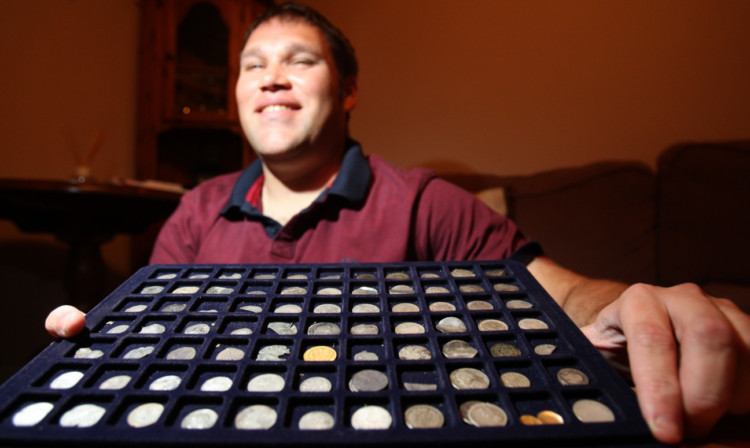The rare discovery of a macabre 16th Century skeleton ring is exciting Scottish archaeologists.
The unusual piece bearing the Latin inscription ‘cogita mori’ or ‘remember death’ was one of two valuable rings discovered by Dundee metal detector enthusiast, Jim Ingram, 30, during digs in Tayside and Fife.
Staff at the Treasure Trove Unit have taken delivery of the artefacts, thought to have belonged to a nobleman or a wealthy merchant.
The skeleton ring, found somewhere near Dunfermline in August, features a design which became popular with goldsmiths of the era.
Such pieces were known as vanitas rings, intended to remind the wearer to live a good life as their time on earth was brief and they would be judged on their actions in the afterlife.
The skeleton is highly detailed and would originally have been covered by enamel, traces of which still survive.
Mr Ingram, who helps organise the Scottish Charity Digs group that has raised more than £3,800 for various causes to date, said he does not take part in the hobby for financial reward.
He added: “The skeleton ring was just a few inches under the surface but it was in great condition.
“There have been examples of 16th Century rings found, however, I did a bit of looking and can’t find anything else like this that has surfaced in Scotland.
“It’s certainly not one of the Norman rings that people wore in the 18th and 19th Centuries.”
The second item was a Posy Ring from the early 17th Century found at Bonnyton Farm, Montrose, also in August.
It is an example of a modern day engagement or wedding ring which would be given from husband to wife.
An inscription, My Affliction, My Affection, refers to the romantic longing and pain at separation that would have been expected in a romance of the day.
